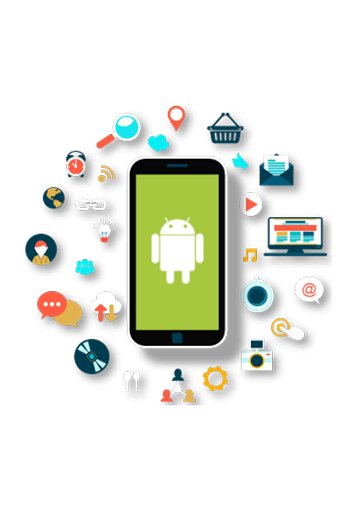Best Practice for Android app Development Company
Android app development company involves a complex process that requires careful planning, execution, and attention to detail. Here are some best practices to consider when developing an Android app:

- Define Clear Objectives and Target Audience: Clearly define the purpose and goals of your app. Identify your target audience and their needs to ensure that your app meets their expectations.
- User-Centered Design: Prioritize user experience (UX) and user interface (UI) design. Create an intuitive and visually appealing interface that enhances usability and engagement.
- Choose the Right Development Approach: Decide whether to develop a native app using Java/Kotlin or a cross-platform app using frameworks like Flutter or React Native. Consider factors like performance, development speed, and platform-specific features.
- Follow Material Design Guidelines: Google’s Material Design guidelines provide a set of principles and guidelines for creating consistent and visually pleasing Android apps. Adhering to these guidelines helps create a seamless user experience.
- Optimize for Performance: Performance is crucial for user satisfaction. Optimize your app’s loading times, responsiveness, and smooth animations. Use tools like Android Profiler to identify performance bottlenecks.
- Use Kotlin: If you’re starting a new project, consider using Kotlin as your programming language. Kotlin offers modern features, concise syntax, and enhanced safety compared to Java.
- Modularize Your Code: Break down your app’s codebase into modular components. This improves code maintainability, encourages reusability, and simplifies collaboration among developers.
- Version Control and Collaboration: Use version control systems like Git to manage your codebase and collaborate effectively with other developers. Follow branching and merging practices to ensure a smooth development workflow.
- Adapt to Different Screen Sizes: Android devices come in various screen sizes and resolutions. Ensure your app’s layout adapts gracefully to different screen sizes and orientations.
- Localization and Internationalization: Plan for app localization from the beginning. Design your app to support multiple languages and cultures, enabling you to reach a broader audience.
- Testing and Quality Assurance: Perform thorough testing, including unit testing, integration testing, and user acceptance testing. Use tools like Espresso for UI testing and ensure your app works seamlessly on various devices.
- Security and Data Privacy: Implement proper security measures to protect user data. Encrypt sensitive information, follow best practices for data storage, and adhere to data privacy regulations.
- Regular Updates and Maintenance: Continue to improve your app even after launch. Regularly release updates to fix bugs, introduce new features, and enhance performance.
- App Store Optimization (ASO): Optimize your app’s metadata, including title, description, and keywords, to improve its visibility on the app store. This can increase the number of downloads and users.
- Offline Capabilities: Design your app to function offline whenever possible. This enhances user experience and usability, especially in situations with poor or no internet connectivity.
- Feedback and Iteration: Gather user feedback and monitor analytics to identify areas for improvement. Use this feedback to iterate and enhance your app’s features and design.
- Documentation: Maintain thorough and up-to-date documentation for your codebase, APIs, and app functionalities. This aids in onboarding new team members and ensures smoother maintenance.
- Legal and Compliance: Adhere to legal requirements, such as copyright, trademarks, and data protection regulations, to avoid legal issues in the future.
Remember that Android app development is an ongoing process, and staying updated with the latest trends, tools, and technologies is essential for creating successful and competitive apps.
Comments
Post a Comment